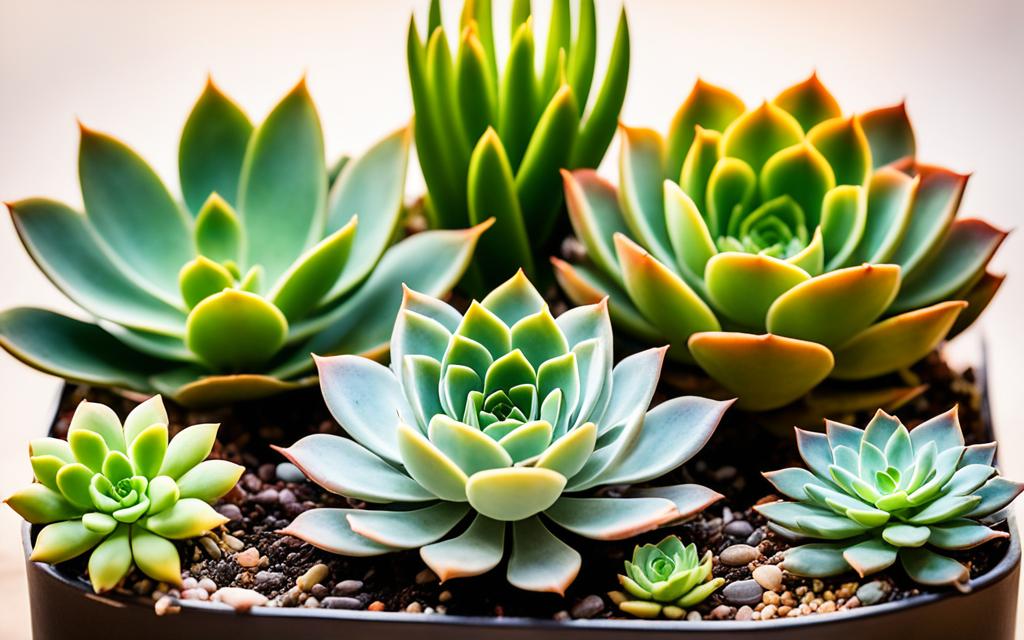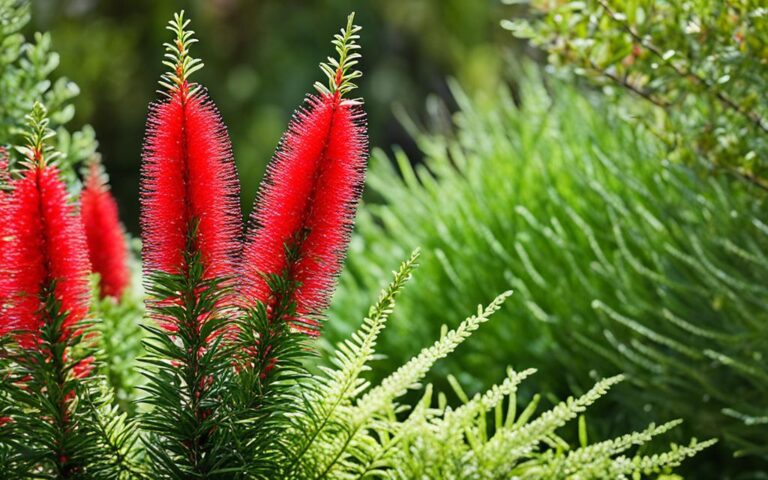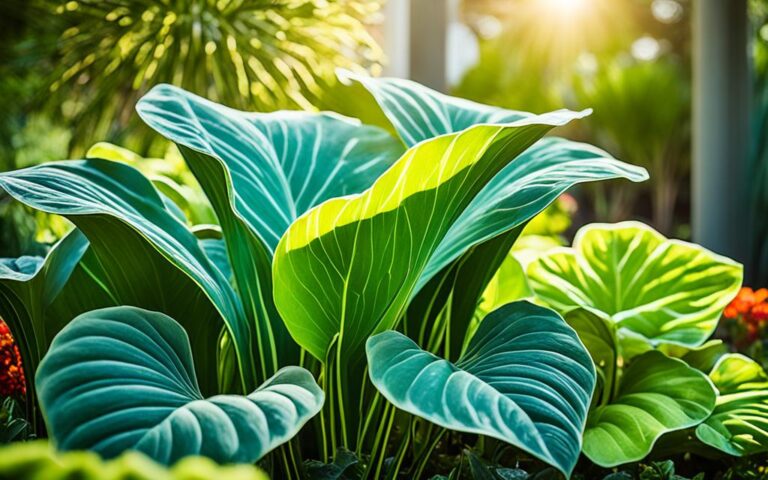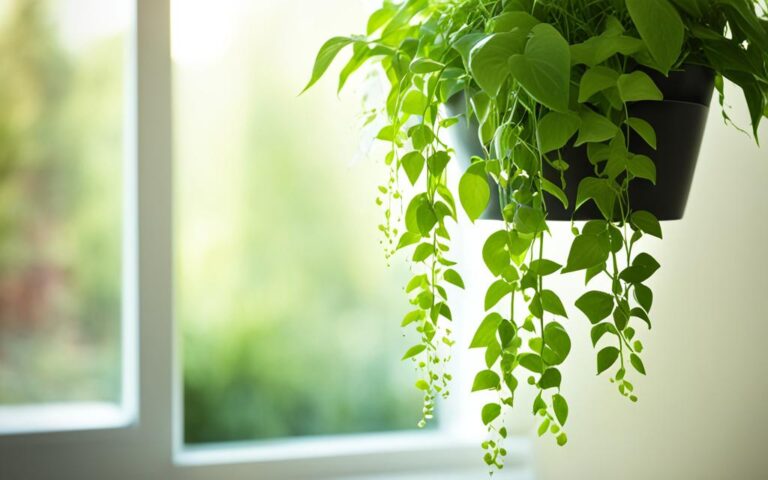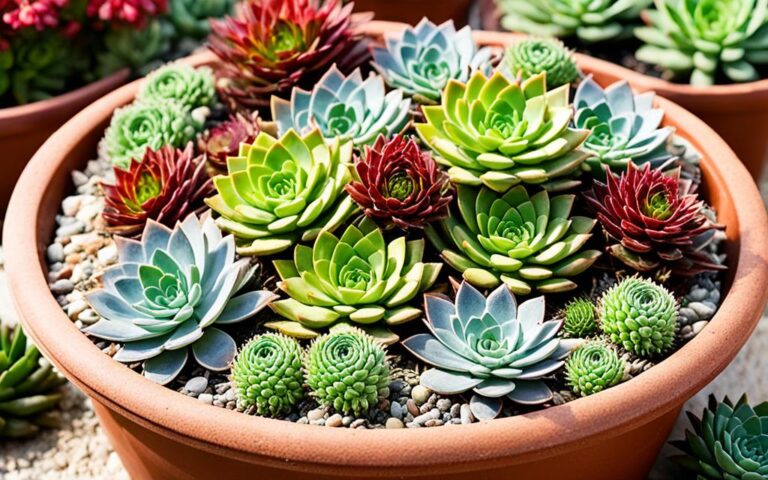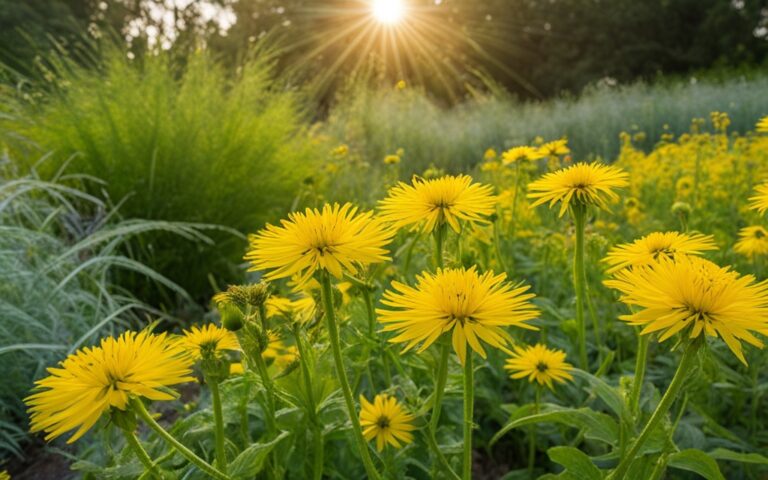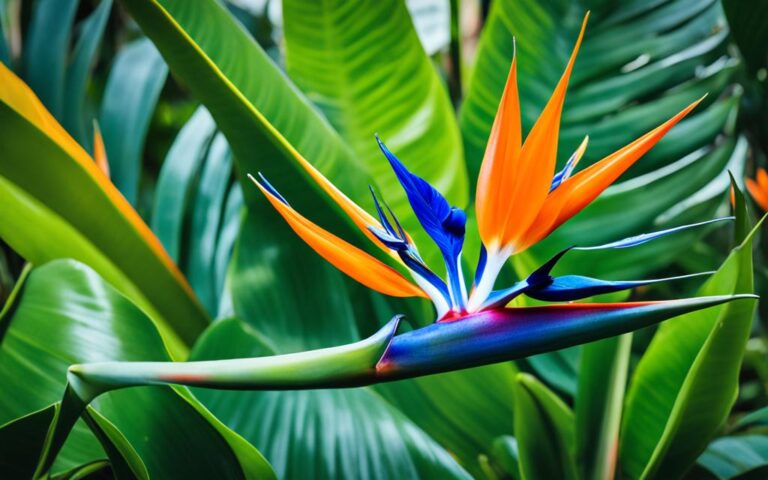Healing Succulent Plants NYT: Nature’s Remedies
Imagine a world where plants we grow and love could help us stay healthy. A recent New York Times article showed how succulent plants can heal us. These tough, dry plants are set to be our new allies for both inside and outside our homes.
Key Takeaways
- Succulents live in deserts and dry places, surviving on just 5 inches of rain a year.
- There are thousands of succulent types, each needing its own care.
- These plants clean the air, removing bad stuff like formaldehyde and carbon monoxide.
- The New York Times talks about how these plants can heal us.
- It’s important to take good care of succulents to get their health benefits.
The Allure of Succulents
Succulents have won over gardeners and plant lovers all over the world. They are loved for their toughness and ability to save water. These plants stand out because of their adaptability, variety, and beautiful look.
Popularity and Unique Charm
Succulents are getting more popular because they are easy to care for and can live in many places. They have a special look with thick leaves and bright colors. This makes them great for gardens and indoor spaces.
They are also great for dry areas because they can survive with little water. This makes them perfect for those who want to save water in their gardens.
Interesting Facts and Varieties
Succulents are amazing plants that can live in tough conditions. There are over 10,000 types, including cacti, aloes, and sedums. They have been used for thousands of years in medicine and beauty products.
Each succulent is different, offering endless possibilities for creative gardens and arrangements. They come in many shapes, textures, and colors.
| Book Title | Price |
|---|---|
| “HOME GROUND: Sanctuary in the City” by Dan Pearson | $29.99 |
| “THE BOTANICAL GARDEN” (two volumes) by Roger Phillips and Martyn Rix | $89.95 and $75 |
| “TIMBER PRESS GUIDE TO SUCCULENT PLANTS OF THE WORLD” by Fred Dortort | $49.95 |
| “TERRARIUM CRAFT” by Amy Bryant Aiello and Kate Bryant | $18.95 |
| “THE GARDENER’S GUIDE TO CACTUS” by Scott Calhoun | $24.95 |
| “DIRR’S ENCYCLOPEDIA OF TREES AND SHRUBS” by Michael A. Dirr | $79.95 |
| “Chihuly Garden Installations” book | $75 |
| “HIGH LINE: The Inside Story of New York City’s Park in the Sky” by Joshua David and Robert Hammond | $29.95 |
Succulents are truly captivating, drawing in gardeners and plant lovers with their unique charm and adaptability. Their wide variety, easy care, and beautiful look make them a favorite in gardens and plant displays.
Anatomy and Features of Succulent Plants
Succulent plants are known for their special features that help them live in dry places. They have evolved to save water and survive in tough conditions.
Leaves, Stems, and Flowers
Succulents have thick, water-storing leaves, stems, and sometimes flowers. Their leaves are often plump and have a waxy coating to prevent water loss. The stems can also store water, sometimes looking swollen.
Some succulents have fewer leaves, with the stem doing most of the photosynthesis. This reduces the area exposed to the sun, saving water.
Specialized Adaptations for Arid Environments
- Succulents have a wide, shallow root system to grab moisture quickly.
- Their leaves may have a waxy or hairy coating to reflect sunlight and reduce evaporation.
- Some can store water in their roots, stems, or leaves, helping them last through droughts.
- Many use a special photosynthesis called CAM to save water by closing stomata during the day and opening at night.
These special traits make succulent plants tough and perfect for dry, drought-prone areas. Learning about their anatomy and survival skills helps us see nature’s cleverness.
Ideal Growing Conditions
Succulents need certain conditions to grow well. They need lots of sunlight, the right temperature and humidity, and soil that drains well. Knowing these conditions is important for keeping your succulents healthy and lively.
Light, Temperature, and Humidity Requirements
Succulents love bright, direct sunlight. Most need at least 6 hours of sunlight daily, some even more. Put your succulents in the sunniest spot indoors, like a south-facing window. If sunlight is scarce, use artificial LED grow lights.
They like warm temperatures, between 65°F and 85°F (18°C to 29°C). Keep them away from extreme cold or heat, as it can harm them. They also don’t like high humidity, as they’re used to dry places.
Soil Mix and Watering Needs
Choosing the right soil is key for growing succulents indoors. They need a succulent soil mix that drains well and has little organic matter. A mix of potting soil, sand, and perlite or pumice works great. Don’t use regular potting soil, as it can hold too much water and cause root rot.
Watering succulents should be careful. They store water in their leaves, stems, and roots. Water them only when the soil is dry, and make sure the drainage is good. Overwatering is a big mistake in care and maintenance of succulents, so it’s better to underwater.
By knowing and meeting the ideal conditions, you can help your succulents flourish. They will add beauty to your indoor or outdoor spaces.
Propagating Succulent Plants
Propagating succulent plants is both rewarding and easy. It lets you grow more plants and share them with loved ones. You can multiply your succulents using cuttings, seeds, and grafting.
Propagation from Cuttings
One top way to grow more succulents is by taking cuttings from leaves or stems. Most succulents can be easily grown this way. The best time for this is in spring or summer when they grow well and get lots of sunlight.
- Easy-to-propagate succulents include sedum, aeonium, echeveria, and Graptoveria Fred Ives.
- Rooting hormone can speed up the process, but it’s not needed.
- Newly cut succulent pieces need light but not direct sun to grow roots, as direct sun can harm them.
- It usually takes about 2 weeks for roots or new succulents to form from cuttings.
When moving new succulents outside, do it slowly to help them adjust to the outdoors.
Seed Propagation
Some succulents, like lithops and haworthia, are harder to propagate and do better with seeds. This method takes more time and patience but can be very rewarding.
| Succulent Variety | Propagation Method | Estimated Rooting Time |
|---|---|---|
| Sedum, Aeonium, Echeveria, Graptoveria Fred Ives | Cuttings | 2-3 weeks |
| Lithops, Haworthia | Seeds | Varies, can take longer |
Patience and careful attention are crucial for successfully propagating succulent plants and growing your collection.
Care and Maintenance Essentials
Keeping your succulent plants healthy is key for their growth and success. Whether indoors or outdoors, proper care is a must. Let’s look at the main ways to keep your succulents in top shape.
Pruning and Training Techniques
Pruning is vital for succulents. Remove dead or dying leaves and stems to promote new growth and keep your plant looking good. Training techniques, like tying stems, help shape your succulent’s growth.
Pest and Disease Management
Succulents are tough but can face pests and diseases. Check your plants for pests like mealybugs or aphids and deal with infestations quickly. Watch for diseases and take steps to keep your succulents healthy.
Fertilization and Nutrient Needs
Succulents need some fertilizer but not a lot. Use a balanced, low-nitrogen fertilizer made for succulents or cacti. Follow the instructions on the fertilizer package to feed your succulents right. Proper feeding helps them stay vibrant and healthy.
By following these care tips, you can keep your growing succulents indoors or in your garden thriving. With the right care, your succulents will keep their unique beauty and toughness.
healing succulent plants nyt
The New York Times recently looked into the healing powers of succulent plants. They shared insights and advice from experts on the health benefits of these tough and versatile plants.
Succulents are gaining popularity for their healing qualities. They can grow in many places and offer natural remedies. Aloe vera helps soothe skin, and jade plants reduce inflammation.
Succulent Sanctuaries and Therapeutic Landscapes
There’s a new trend of creating healing forests in cities, like the Manhattan Healing Forest on Roosevelt Island. These forests have 1,000 native plants, trees, and shrubs. They aim to bring peace and healing to city people.
The New York Times supports these projects. They believe these forests can improve mental health and overall wellness by connecting us with nature.
The article also talked about adding succulents to our homes and gardens. These plants clean the air, lower stress, and bring peace. They’re great for anyone looking to live a healthier life.
“Succulents have the power to transform our living spaces into sanctuaries of calm and well-being, offering a natural remedy for the stresses of modern life.”
– The New York Times
Types of Succulents
The world of succulents is vast and fascinating. It offers many shapes, sizes, and unique traits. From the iconic cacti to the charming echeverias, these plants have won over gardeners and plant lovers.
Cacti and Their Unique Characteristics
Cacti are well-known for their distinctive spines and striking looks. They have special traits to survive in dry places. They store water in their stems and leaves. From the tall saguaro to the small pincushion cactus, they come in many shapes and sizes, each with its own charm.
Other Succulent Families and Genera
- Echeveria: These succulents form rosettes and are loved for their bright colors and patterns.
- Sedum: Known as “stonecrop,” sedums are versatile and can be used in many garden settings, from groundcovers to containers.
- Aloe: Famous for their healing properties, aloe plants are easy to care for and great for indoor and outdoor spaces.
- Jade Plant: With thick, woody stems and round leaves, jade plants are a classic succulent that can grow big.
Whether you like the bold cacti or the delicate echeverias, succulents offer many options. They’re perfect for creating beautiful succulent garden designs or adding to your drought-tolerant landscaping plans.
Succulent Arrangements and Displays
Succulents have won over gardeners and plant lovers around the globe with their unique look and flexibility. They can thrive in both indoor and outdoor settings, offering endless chances for creativity. Let’s dive into the world of succulent arrangements and displays, where creativity knows no bounds.
Indoor Succulent Gardens
Turning your home into a lush indoor succulent garden is a great way to add nature’s beauty indoors. Use terrariums, hanging baskets, or custom planters to arrange a mix of succulents. Play with different textures, shapes, and colors to make displays that will amaze everyone.
- Choose low-care succulents like echeveria, jade plants, and sedum for your indoor garden.
- Use unique containers, such as glass vessels, vintage items, or modern planters, to show off your succulents.
- Place your indoor succulent garden in a spot that gets plenty of indirect sunlight, as these plants love bright, sunny spots.
Outdoor Succulent Landscaping Ideas
Bring succulents into your outdoor areas for a touch of beauty and ease. Add these plants to your garden beds or containers for stunning, low-care scenes. They’re perfect for creating memorable outdoor spaces.
- Design succulent borders and edgings to highlight pathways, beds, or special spots in your garden.
- Use succulent ground covers to make a beautiful carpet of colors and textures, cutting down on water use.
- Add succulents to your rock garden or xeriscape for a peaceful, eco-friendly outdoor area.
Whether you’re making an indoor retreat or an outdoor paradise, succulent arrangements and displays are full of creative possibilities. Let these tough plants turn your spaces into lively, easy-care havens.
Drought-Tolerant Landscaping
Climate change is making drought-tolerant landscaping more important than ever. Succulents are a great solution because they can live in dry places. They look good and help save water, making outdoor spaces more sustainable.
Succulents are great for dry landscaping because they store water in their leaves and roots. This lets them survive and even do well in places with little water. They’re perfect for areas with long droughts or water shortages.
Here are some tips for using succulents in drought-tolerant landscaping:
- Choose a mix of succulent types for looks and all-year beauty.
- Put plants that need the same water and sunlight together.
- Add rocks and gravel to help the succulents look good and save water.
- Place succulents to shade other areas and reduce water loss.
Using succulents makes outdoor spaces beautiful and easy to care for. They save water and help us live more sustainably. As the climate changes, using drought-tolerant landscaping with succulents will become even more important.
| Succulent Variety | Water Needs | Sunlight Requirements |
|---|---|---|
| Echeveria | Low | Full sun |
| Jade Plant | Moderate | Partial shade to full sun |
| Agave | Low | Full sun |
| Sedum | Low | Full sun |
Adding these drought-tolerant succulents to your garden makes it beautiful and sustainable. It can handle tough environmental conditions.
Succulent Soil Mix Recipes
Creating the right soil mix is key for your succulents to stay healthy and grow well. Succulents love dry places and need soil that drains well and has the right nutrients. Here are some recipes for the best soil mix to make your succulents look great.
Succulent Soil Mix Essentials
For a great succulent soil mix, you need these important parts:
- Potting soil or cactus mix: This gives your succulents the nutrients they need.
- Perlite or pumice: These help with drainage and keep the soil from getting too wet.
- Coarse sand or grit: This makes the soil better structured and helps with drainage too.
- Compost or decomposed organic matter: It adds important nutrients to the soil.
Succulent Soil Mix Recipes
Try out these recipes to find the best mix for your succulents:
| Recipe | Composition |
|---|---|
| Classic Succulent Soil Mix | 2 parts potting soil, 1 part perlite, 1 part coarse sand |
| Nutrient-Rich Mix | 2 parts potting soil, 1 part perlite, 1 part compost |
| Gritty Succulent Blend | 1 part potting soil, 1 part perlite, 1 part crushed granite or gravel |
The best soil mix can change based on your area, the succulents you have, and what you like. Try different mixes and adjust them to suit your succulent garden.
With the perfect succulent soil mix, you’re set to give your care and maintenance of succulents the best conditions. Choose the right soil, and your succulents will grow strong and colorful.
Healing Properties of Succulents
Succulents are known for their healing powers. The New York Times has been exploring their benefits in horticultural therapy. These plants are amazing for healing.
For thousands of years, people have used succulents for health reasons. Aloe vera is famous for its healing skin and reducing inflammation. It’s great for minor burns and cuts. NASA found it can clean the air by removing harmful chemicals.
Succulents also help with our mental health. Taking care of them can make us feel calm and happy. They’re used in therapy to help people feel better.
“Justina Blakeney, a renowned plant enthusiast, endorses the healing power of plants in homes, noting that their presence can have a profound impact on our mood and overall well-being.”
More people are looking at natural ways to stay healthy. Succulents are becoming key in health and wellness plans. They help with skin issues and mental health, making us feel better overall.
| Succulent Species | Medicinal Properties | Therapeutic Benefits |
|---|---|---|
| Aloe Vera | Soothing, Anti-inflammatory | Treats minor burns, cuts, skin irritations |
| Jade Plant | Antioxidant, Anti-bacterial | Reduces stress, promotes relaxation |
| Echeveria | Anti-inflammatory, Wound Healing | Enhances mood, fosters emotional well-being |
New York Times Gardening Advice
For those who love plants, the New York Times gardening advice is a goldmine. It shares tips on growing succulents indoors and outdoors. This section uses the newspaper’s deep knowledge to help readers grow beautiful succulent gardens.
The New York Times says knowing how much light and water succulents need is key. They suggest placing succulents in sunny spots or using grow lights indoors. For watering, the Times recommends soaking the soil and letting it dry out before watering again.
Experts at the New York Times talk about the best soil for succulents. They say to use soil that drains well and is gritty, like the dry places where these plants live. They also give advice on making your own soil mix, repotting, and growing more succulents.
The Times also shares tips on how to display and arrange succulents. They show how to make beautiful terrariums and drought-resistant gardens. These ideas help readers make their succulents stand out.
Whether you’re an expert or just starting, the New York Times has great advice for growing succulents. Their tips and expert advice help readers create beautiful succulent gardens at home.
Growing Succulents Indoors
Succulents are a hit for indoor gardens because they’re tough and beautiful. They love dry conditions but need special care indoors. By knowing what they need, you can make a lovely indoor garden with these plants.
Tips for Success
Here are some tips to keep your indoor succulents happy and bright:
- Lighting Requirements: Succulents love lots of sunlight. Put them in the sunniest spot in your home, like near a south-facing window. If sunlight is scarce, use grow lights to help them.
- Soil and Drainage: They do well in soil that drains well. Mix four parts loam, four parts sharp sand, one part peat moss, and one part vermiculite. Make sure pots have holes to prevent water from pooling.
- Watering Needs: Water them 2-3 times a week when they’re growing. Let the soil dry out a bit before watering again. Water less in winter when they sleep.
- Humidity Control: Succulents like dry air. Don’t put them in humid places like bathrooms or kitchens. Use a dehumidifier or keep them in well-ventilated spots.
- Fertilization: Feed them a weak liquid fertilizer every 2-3 weeks when they’re growing. This gives them the nutrients they need.
- Pest Management: Watch out for pests like mealybugs, aphids, and plant lice. Use insect sprays right away if you find any to keep your succulents healthy.
With the right care, your indoor succulents will do great and add beauty to your home. Remember, be patient and pay attention to their needs for a beautiful succulent collection.
“Succulents are not only visually stunning but also remarkably easy to care for, making them the perfect choice for busy indoor gardeners.”
Succulents in Horticultural Therapy
Succulents are becoming key in horticultural therapy because of their tough nature and beauty. The New York Times highlights their healing effects. They are now seen as tools to improve health in many ways.
When people care for succulents, it can greatly help their health. Studies show that these plants can lower blood pressure, ease pain, and reduce stress. People recovering from surgery heal faster when they take part in succulent therapy.
Succulents also help with mental health. They make people more focused, help with memory, and boost productivity. This makes them great for homes and offices. Taking care of them gives people a sense of purpose and happiness.
Health experts and therapists are now using succulents more often. They see how these plants can heal both body and mind. By using succulents, they create spaces that help people take back control of their health.
In today’s busy world, succulents in horticultural therapy are a natural solution. These tough plants show us how nature can heal. They bring hope and help people feel better when they need it most.
Conclusion
As we wrap up our journey into the world of healing succulent plants, it’s clear these plants are more than they seem. The New York Times’ insights show how succulents can improve our health and mood. They’re not just pretty; they’re also good for us.
This guide has shown us the special traits of succulents. It taught us how to care for them indoors or in a garden. These plants are amazing because they can live in many places and help us in many ways. They clean the air and offer natural health remedies.
In closing, the main idea is clear: succulents can change our lives for the better. By growing succulents indoors and using them for health, we connect deeply with nature. This shows how these healing succulent plants can lead us to a healthier, happier life.
